The Black Bear typically hibernates from November to April in central Ontario usually at the base of a tree stump or under a suspended log. In January, the sow gives birth to one or two cubs emerging in April at which time the cubs will weigh around 2.5kg. The sow will lose half her body fat during hibernation, her body temperature will drop from 38°C to 33°C and her heart rate reduces from 50 beats per minute to 10. During this period she does not eat, drink, urinate or defecate.1
Do you hear something?
One of our field crews were marking some trees for a bat research project along the Highway 69 corridor scheduled for a clearing contract when one of the construction staff mentioned that they may have found a bear den within the clearing contract. We snowshoed to the site and as we stopped to try and find the exact location you could distinctly hear the sound of the bear breathing slowly not two metres from where we were standing. Every once in a while you could hear the soft squeal of a cub over the rhythmic breathing of the sow.
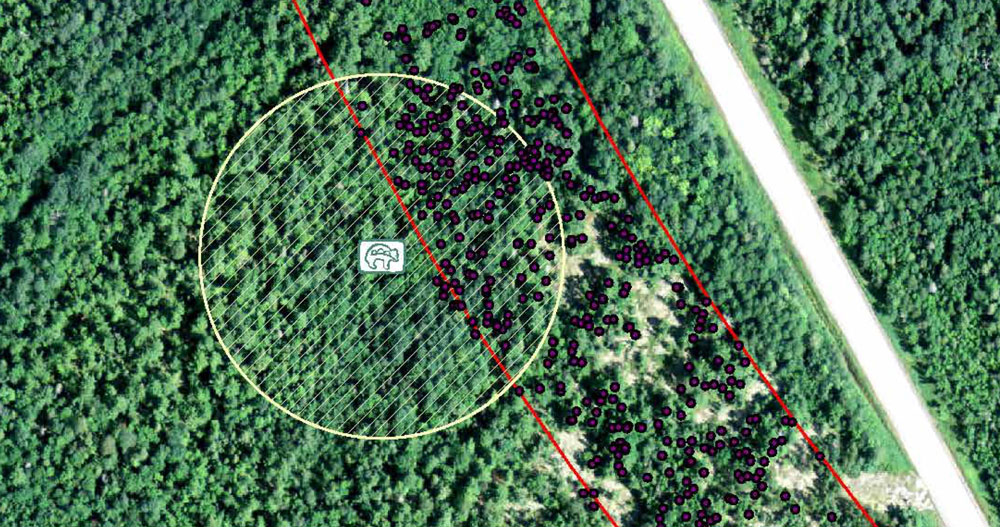
Now what?
We consulted with the clearing contractor explaining that we would need to apply a 100-metre buffer around the den during the cutting operations and maintain that buffer until the sow and cub had left the den likely in April. We set up a remote camera to monitor the den until the bears emerged from hibernation.
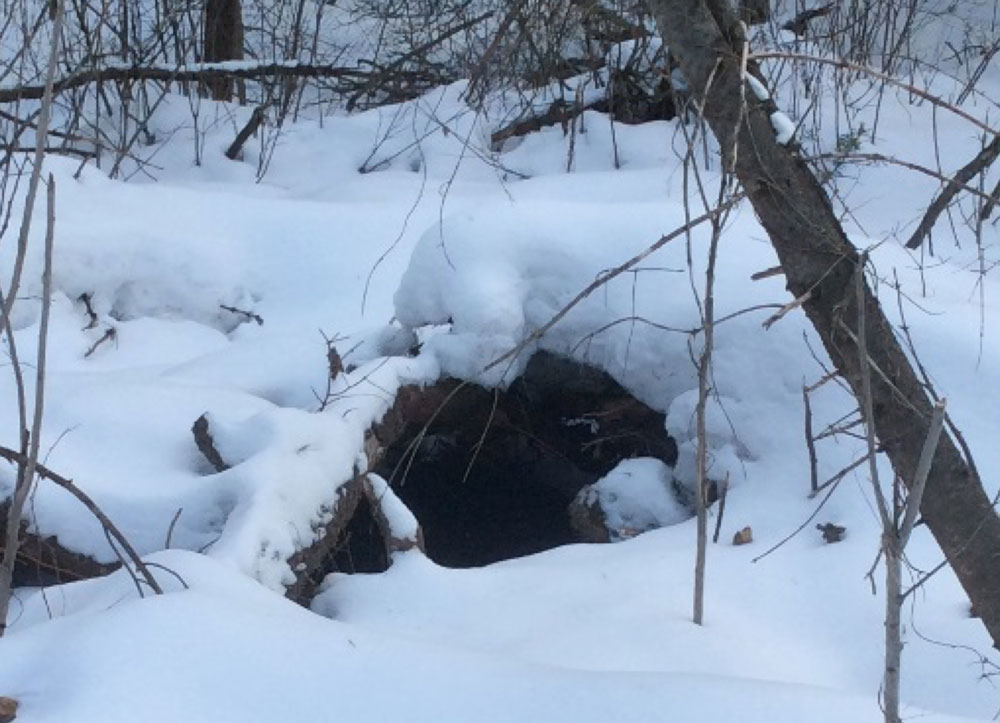
The average person rarely gets a glimpse of bears during hibernation.
We often think that a bear den would be extremely well-protected from the winter elements. That’s not always the case and definitely not in this instance. This tangle of downed branches and logs offered limited protection being totally exposed to the wintry north winds. The photo below was taken in April just after the bears had successfully over-wintered and left the “den”. You would never suspect that a bear would use this loose jumble of logs and branches as a winter den.
The remote camera documented the hibernation period from late January until late winter capturing hundreds of photos and video clips. The photos below show the sow looking outside the den and if you look carefully at the next photo you can see the paw and snout of the cub.
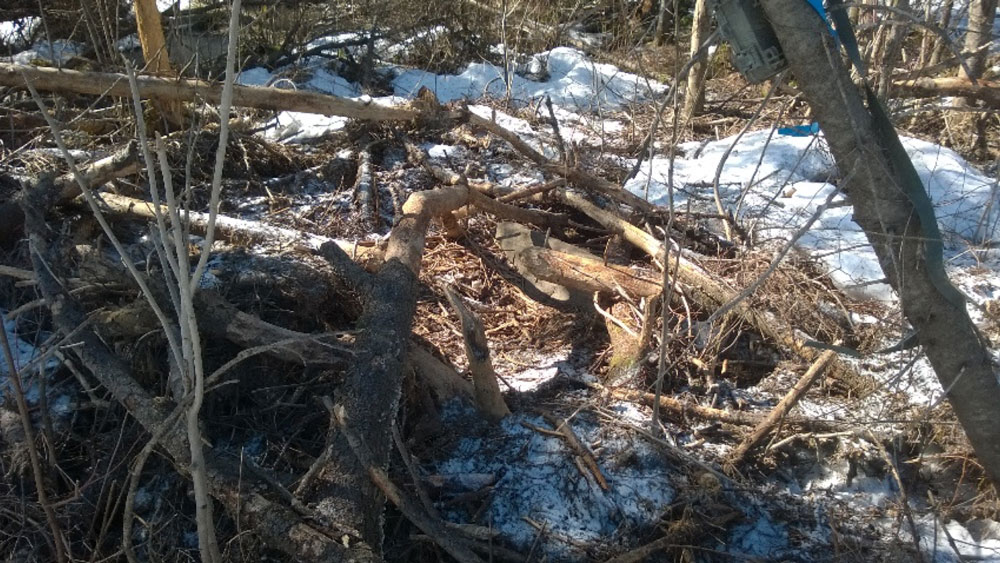
Why are bears always hungry?
Imagine for a moment that for 6 months of the year a bear is confined to a den slowly losing body weight as it waits out the winter. When it emerges in the spring, its favourite foods of berries and nuts are nowhere to be seen so it fills its belly with grasses and sedges just to quell the hunger. The berry season which lasts about 6 weeks is about the only time of the year that a bear is actually gaining weight, the rest of the year it is just holding its own or losing weight. Acorns and other nuts are an important food source that is rich in fat and available just prior to hibernation.
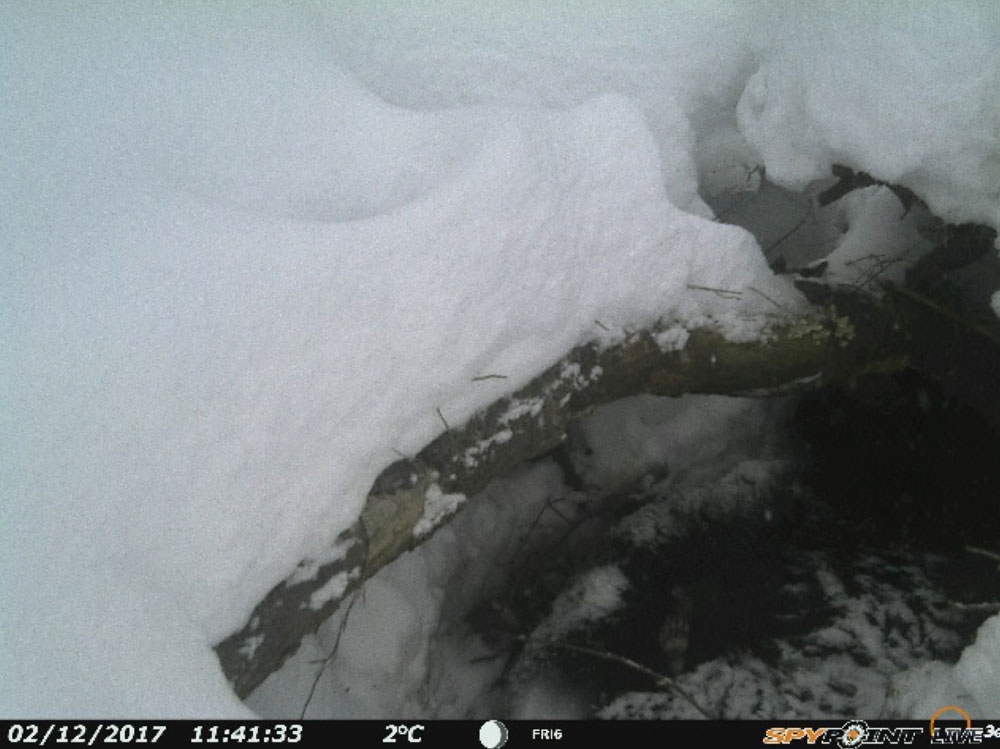
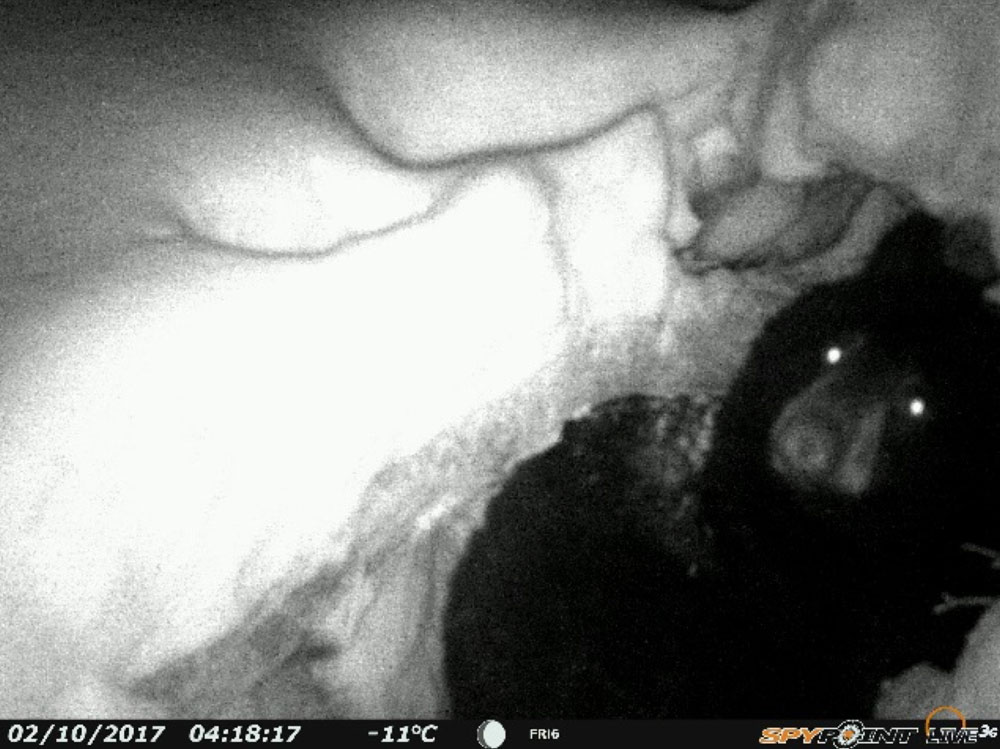
If you happen to stumble upon a hibernating bear, appreciate the challenges they have to overcome just to survive and give them some space.